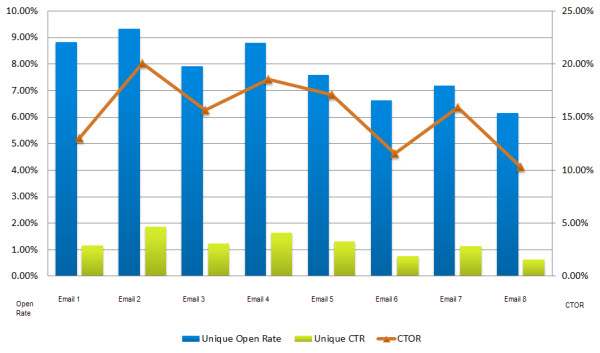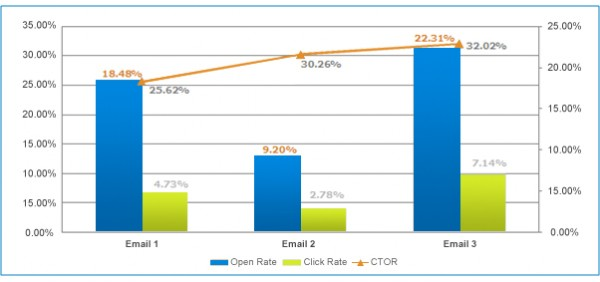Conquest Email Opens, Clicks, and Clicks-to-Opens: What’s the Difference?
If your dealership has ever faced the daunting realm of email marketing, you most likely have heard whispers of “open rates” and “click-through rates.” Perhaps you’ve even had a cryptic send report mention a “click-to-open rate” or “HTML click-through rate.” But what does it all really mean? And, if you had to choose, which would be the best measure of a successful (or, -yikes!- unsuccessful) campaign?

Boring Definitions
Measures 1) your audience’s recognition of your brand and 2) your subject line’s impact on the audience
Measures total number of clicks from your campaign
Measures how many people clicked out of the people who opened your email
A Real-Life Example
If you send 100,000 emails and 1,741 people click, your click-through rate (CTR) is 1.74%. This measure tells you how many people clicked out of your entire send list and how engaged your audience is as a whole. However, it tells you very little about how effective the content of your campaign is, because it takes into account people who didn’t even open your email.
Now let’s review the same send report, but this time, I want to focus on the open rate rather than the entire number of sends. Let’s say only 13,054 people opened your message out of the 100,000 emails you sent. What is your click-to-open rate (CTOR)?
To find out, simply divide your amount of clicks (1,741) by your amount of conquest email opens (13,054), and multiply by 100. In this case, your CTOR is a rockin’ 13.34%. In other words, 13.34% of the people who caught a glimpse of your featured vehicles, read your special gift card offers, and followed your calls-to-action were interested enough to want to learn more.
Your click-to-open rate (CTOR) is the best way to measure how effective your content, design, and offer are at driving clicks because it measures how many people clicked after viewing your email.
But Won’t The Overall CTR Be Just A Larger Representation Of CTOR?
YES! In most cases, your CTR will be proportionate to your CTOR. But if you ignore CTOR because you always expect it to fall and rise with CTR, you might change the wrong element of your email to improve its success.
If you don’t take your CTOR into account, you could make the mistake of changing your email content to increase your clicks, when the actual reason for low engagement was your send list!
Click to Tweet
A list of unengaged subscribers or a list that is too large can just as easily decrease a campaign’s overall clicks. This is why it’s necessary to compare each campaign’s individual performance and closely evaluate your send reports.
Check out the charts below from to see the different ways that CTOR can interact with CTR, and how comparing these measures can help you understand your audience’s engagement:


Image Source: MarketingLand.com
If you’re testing your email campaigns and analyzing your send reports (which you should be!), remember that there IS a difference between click-through rate and click-to-open rate. If you have a low CTR, don’t immediately change what vehicles to feature, or what prices to display; your CTOR is the best way to determine the effectiveness of this type of content.
Just because click-to-open rates are the best measure of content effectiveness doesn’t mean open rate and click-through rate aren’t important or don’t influence your campaign’s success.
Tracking all three components is the only way to truly understand how your email performed and how your subject line, audience engagement, and email content interact.
Enjoy this article? Subscribe to our blog to receive our latest articles, tips for your dealership, and more.


